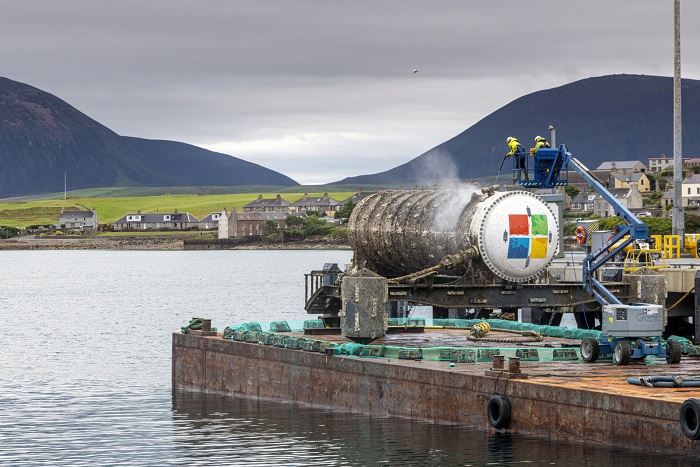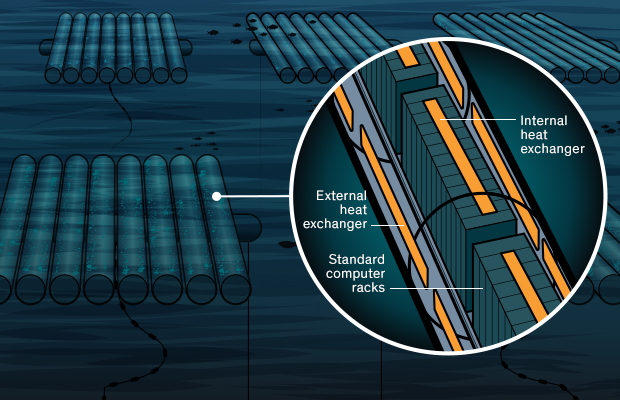Microsoft’s Underwater Datacenters: A Revolution in Sustainable Technology

Microsoft’s latest venture into underwater datacenters marks a significant step in sustainable and practical computing. These submerged datacenters are proving to be reliable, efficient, and a blueprint for future technological innovations in the field of data management and environmental responsibility.
Innovative Design and Deployment
The design of these underwater datacenters reflects a breakthrough in engineering and sustainability. Sealed within watertight structures, they harness the natural cooling properties of the ocean, significantly reducing the need for artificial cooling systems, a major contributor to energy consumption in traditional datacenters.
Deployment in underwater environments also presents fewer challenges than land-based datacenters, such as land acquisition and building permits, making them quicker and less expensive to deploy.
Moreover, the proximity to large coastal cities allows for reduced latency in data transmission, providing faster and more efficient service to end-users.
Energy Efficiency and Sustainability
Microsoft’s underwater datacenters are a testament to the company’s commitment to energy sustainability. The potential for harnessing renewable energy sources, such as tidal and solar energy, is immense, making these datacenters almost entirely self-sustaining.
This approach not only reduces the carbon footprint but also ensures a more reliable power supply, less impacted by terrestrial energy grid fluctuations or outages.

Enhanced Reliability and Reduced Maintenance
The underwater environment provides natural cooling, significantly reducing the risk of overheating, a common issue in traditional datacenters. This natural cooling leads to enhanced reliability and longevity of the hardware.
Maintenance requirements are also lower. The sealed, controlled environment prevents issues like dust accumulation and corrosion from environmental exposure, common in land-based datacenters.
Microsoft’s research indicates that these underwater datacenters have one-eighth the failure rate of their land-based counterparts, demonstrating their superior reliability.
Challenges and Future Potential
While the advantages are clear, underwater datacenters do face challenges, such as the complexity of repairs and upgrades in a submerged environment. However, the long-term potential outweighs these challenges.
As technology advances, these datacenters could pave the way for a new era of sustainable computing, with applications extending beyond traditional data storage to areas like deep-sea research and marine environmental monitoring.
